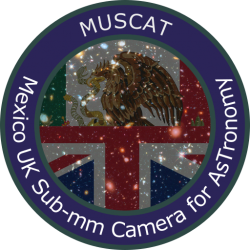The first generation of MUSCAT targets to distinct areas of astronomy: galaxy evolution and mapping star-forming regions.
Extra-galactic Astrophysics

The SPIRE instrument on Herschel has produced a significant number of exciting results from large-area extragalactic and Galactic mapping projects. However, the angular resolution provided by the relatively small telescope (3.5 m diameter) limited the accuracy of the source positions and source confusion made it difficult to detect normal and infrared luminous galaxies (1012 Lסּ luminosity limit) at high-redshifts. The Herschel-ATLAS (H-ATLAS) is, the widest (550 deg2) sub-mm survey and contains 300,000 detected sources.

Some of the most important H-ATLAS results have come in the field of galaxy evolution. The H-ATLAS team has found the optical counterparts for the sources at z<0.4 (about one third of the total), revealing surprisingly strong cosmic evolution during the last four billion years, which is inconsistent with all current models of galaxy evolution. However, because two thirds of the H-ATLAS sources lie at higher redshifts, the big uncertainties in the source positions have made it impossible to identify optical counterparts, and thus to investigate galaxy evolution at an earlier cosmic epoch.
Star Formation

Herschel observations of the Milky Way have revealed the ubiquity of interstellar filaments in star-forming regions, and their tight link to core/star formation. This has motivated a large number of recent investigations to understand the physical link between filament evolution and core/star formation. However, this type of study is limited by the small number of regions that can be probed at high enough resolution with current facilities—the Gould belt star-forming clouds (d < 400 pc). Unfortunately nearly no massive stars are currently forming in these regions and taking whatever is happening in these clouds as a template for the formation of stars in the rest of the Galaxy is a problem.
The powerful combination of MUSCAT’s ultra-fast mapping speed and high angular resolution will enable large-scale galactic surveys to improve by a factor 3–10 in mass sensitivity and 2–3 in angular resolution all existing or planned surveys. It will become possible to map 0.1-pc scale structures up to a distance of 4 kpc from the Sun. This size has been recognised as a possibly universal scale of the star formation process. MUSCAT will survey large volumes of the Galaxy with enough spatial details to bridge, for the first time, the gap between nearby/low-mass and far/high-mass star forming clouds, providing a unique opportunity for establishing a global picture of the star formation process in the Milky Way.

